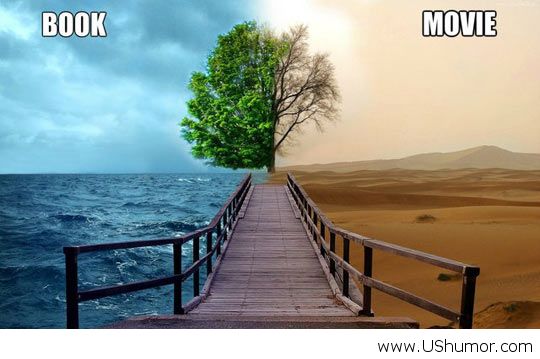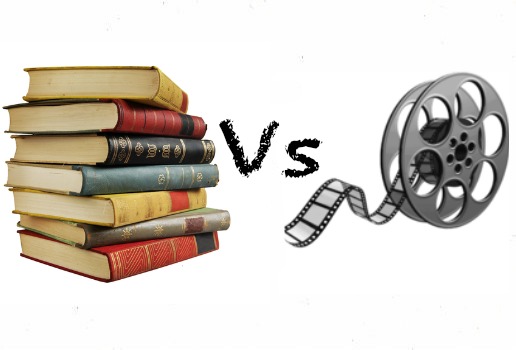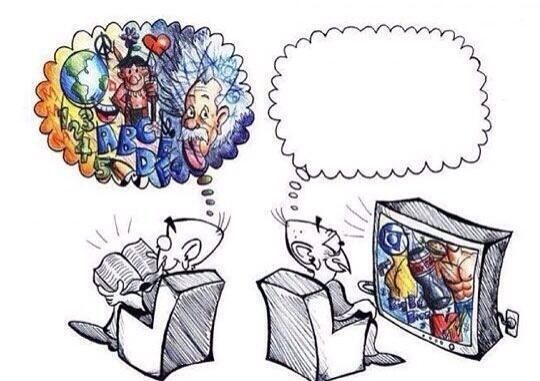Reading vs Watching Videos: What Science Says.

It is a fact; reading culture is being challenged on all fronts by new technology. These new technologies are challenging the predominance of books by presenting information in alternative ways.
There was a time when books were the most reliable, most accurate, most convenient, and the most popular means of obtaining information. Their usefulness was what promoted a widespread reading culture.
Libraries, being the usual repository of books, were and are available in almost every town, and many homes usually have one. Book collections in homes and institutions were very common, and people learned exclusively from books.
But today, the distinction that books enjoyed as the most popular repository of information and learning is being challenged with the proliferation of technologies such as videos.
No doubt, videos have been around for a long time, but until this century, they haven’t been as easily obtainable as books. The ease of making videos and procuring them was engendered by the rise of digital devices and the internet.
Today, video collections on computers, smartphones, and tablets are very common. We can say that in today’s world, videos are increasingly challenging books and the reading culture. In fact, there are now individuals who have never collected books (physical or electronic) in their lives.
We once examined a similar phenomenon in a previous article, but as exhaustive as that article was, it only talked exclusively about a war between two reading mediums: e-books and printed books.
E-Books and printed books are only mediums for doing the same thing: reading. Video is another medium entirely, it conveys information in a way directly different from books. And it is getting widespread faster, so widespread that it is challenging reading as a popular means of obtaining information and learning.
But which is best for obtaining information and learning? Reading or watching videos? Which does it better?
To answer this question won’t be an easy task. Debates are already raging on the internet and off the internet on whether reading is still the best way to learn, or videos (which are now very common in learning situations) presents a better alternative.
However, mass opinions can be confusing — proponents of reading and proponents of video equally have solid arguments to back up their preference.
It is the reason why we will have to turn back to science to answer this question.

What Science Says On Reading And Watching Videos
Actually, the heading would have been more correctly presented as “What social science says…” rather than “What science says… “, this is because investigations like these fall mostly under the purview of the social sciences.
Unlike physics and chemistry for example, where facts are derived from physical experiments using fixed and known variables, determining the benefits and harm of reading or watching videos on human beings can best be achieved by using tools from the social sciences: like surveys, interviews and studying feedbacks from sample groups of people over a long period of time; and they are the tools all reputable investigators of the problem have been using. Their conclusions are interesting.
Is reading better than watching videos, or is watching videos better than reading? Let’s first hear what investigators who have researched both have to say, then we can safely pass our verdict:
A. In their article on binge-watching TV, businessinsider.com inferred (based on research) that watching TV (videos) disrupts the sleep cycle, makes the watcher used to instant gratification (unlike the slower but deeper gratification reading books bring) and can induce muddle-headedness in watchers when it is made a daily routine. [1]
In the Business Insider article, unlike watching videos, reading got a clean sheet, especially in matters of health benefits.
B. From a review of research done since 1992 by Professor Patricia A. Alexander and her Ph.D candidate, Lauren M. Singer, it was found that students were able to “comprehend information in print or text that were not more than a page in length (better than equivalent video) [2].
Both researchers published links to numerous other studies arriving at similar conclusions. Together, they served as the basis for their own conclusions that no matter how much the digital revolution is urging us to go paperless, “there should always be a place for print inside students’ academic lives” [3]
C. In 2013, the results of a study from Emory University emerged, conducted by Professor Gregory Berns, Kristina Blaine, and other colleagues. The study aimed to observe the before and after effects of reading, using fMRI as the tool of observation. [4]
In the study, college students were asked to read Pompeii by Robert Harris, a historical fiction work based on the true event of Mount Vesuvius eruption in AD 79. The book, having a strong narrative technique and dramatic plot, was specially chosen due to its basis on true events.
The reading students’ brain activities were monitored before and after the reading through the fMRI.
After the reading, it was observed that students “had increased connectivity in parts of the brain that were related to language.” [5] Not only that, increased activity was also observed in the “sensory motor region of the brain.”[6]
The observance of increased activity in the sensory motor region is particularly interesting, for it suggests that the students experience “similar sensations as the characters in the book” [7].
That the students’ motor areas of the brain were stimulated is a testament to the skills of the writer, however, it is also a pointer that each book we read can have subtle but strong beneficial effects on brain activities.
D. According to researchers at the University of Sussex, “six minutes of reading can reduce stress levels by up to 68%” [8]
Comparing it with other methods for reducing stress, reading leaves a respectable margin when compared to drinking tea and coffee, which comes in at 54% stress reduction, and taking a walk, which comes in at 42%. [9]
E. In a survey conducted by Harris Poll, a “global market research firm” [10] on behalf of Pearson, an education company, YouTube ranked as the most preferred learning tool, specifically among people aged between 14 and 23 who participated in the survey.
59% of those surveyed mentioned YouTube as their most preferred learning tool. Only 47% choose reading.
The survey suggests that preference for either reading or watching videos as a learning tool can be influenced by age. It seems it is likelier for people aged 14 to 23 (who grew up in the digital age) to prefer videos over books.
F. In a very interesting experiment from MIT’s Integrated Learning Initiative in 2018, a learning session was designed by researchers and students were asked to sign up. Those who signed up were splitted into two groups: one group is to take the learning session by video purely and the other is to take it by reading a video transcript that has been spruced with some explanatory diagrams. [11]
Both groups were invited to take an assessment test on the morning after the session. This assessment test was designed to test comprehension and retention. Along with this test, both groups were also surveyed on the learning method they preferred.
Interestingly, before the experiment was even conducted, the researchers have hypothesized that students will prefer watching videos to reading. They even went further: they hypothesized that students who watched the video would score better in the post-learning assessment than those who read the transcript only.
Ironically, their results expressed the opposite!
Their results showed that most students preferred reading to video. And on the post-learning assessment score, students who have read transcripts performed slightly better than students who watched the video.
G. For a well-known study by Authors Lauren M. Singer and Patricia A. Alexander of University of Maryland, they both summarize their findings for a Business Insider article, they wrote “while new forms of classroom technology like digital textbooks are more accessible and portable, it would be wrong to assume that students will automatically be better served by digital reading simply because they prefer it.”[12]
The main findings from their study can be summarized as:
1. Students preferred to read digitally.
2. Students judged their comprehension as better (online) with screens than with prints.
3. But the study actually shows that overall comprehension was better for print (reading) than with digital reading. [13]
H. In a study conducted by Ami I. Nathanson and Eric E. Rasmussen to investigate how preschoolers interact with their mothers while they are watching TV together, and while they are reading a book together, it was found that watching TV resulted “in lower amounts and quality of communication between the mother and child.” [14] In contrast, while reading books together, the study found that mothers are more likely to “ask their child questions, respond to their child’s statements and questions, and explain concepts in greater detail.”[15]

More Arguments on Reading Vs Watching Videos
1. The Active Vs Passive Argument
Reading has been described as an active activity while watching videos have been described as a passive activity.
Reading is an active process because it involves more of our cognitive senses to carry out. It requires us to be fully alert to interpret the symbols that make up what we are reading. Our mind needs to go along with what we are reading if we are to make meaning out of it, and our imagination needs to be at the “front seat” as well. In fact, reading is an active process that involves many senses in the body.
Watching videos, on the other hand, is just the opposite. It is a passive process. The watcher does not need to put his senses on any high alert before he can understand what he is watching, the video just feeds him with the information directly without him taking any active part in interpreting. Watching videos do not put the cognitive senses into any use close to how reading puts it.
2. Objective Vs. Subjective Argument
Reading presents more objective and descriptive information. Watching videos mostly presents subjective information but is more efficient and convenient.
For an objective and more descriptive information, reading is the better choice. Videos can be objective but it leaves the interpretation of its message too much to the understanding of its viewer(s).
Reading is highly descriptive and its message is presented in a way so as to be interpreted without ambiguity.
3. The Control Argument
Reading gives the reader the power to control the pace of their reading. Watching videos dictates the pace of watching (and even understanding) which can be too slow or too fast for the reader.
4. The “Best Introduction Tool” argument
There is an argument over which is the best approach to learning difficult topics between reading and watching videos. We think videos are the better tools for this.
Because of the highly visual experience provided by videos, they can be awesome tools to introduce difficult topics to learners. Reading, on the other hand, may not offer much in this aspect.
Videos can be used to simplify complex topics. But unless a writer is highly talented or experienced, making an introduction to a difficult topic by writing may never be as smooth as using a video. This is probably the major reason why video tutorials have experienced an explosion in popularity.
A Verdict Easy To Decide
Almost all the researches quoted above are in support of reading. To be factual, there isn’t an overabundance of research on the whole matter, but most of what is available support reading over watching videos. Among the best of them are those quoted above.
Reading And Videos: Shouldn’t We Fear Information Overload?
Reading and videos are means of gaining information, nothing much else. But because they play such crucial roles in our lives, it is possible to have too little or too much of both.
We have extensively written about the phenomenon of information overload, which has especially become a big deal since the advent of digital devices, social media, and the internet.
The ubiquity of videos is likely to foster or is already fostering a new kind of information overload: peculiar to videos; spurred by the internet and improvement in download speed.
Information overload in the form of unsolicited texts and pictures that bombards our feeds and inbox every day is already a nuisance. If this is added to the easy videos content creators are creating along with them, the problem of information overload may be compounded.
YouTube and Instagram are some examples of platforms that are built around video creation and downloading. Their combined users and subscribers numbered in the billions; uploading and downloading videos every day.
We have reasons to fear. Watching videos is already competing with reading. With these easy videos added to our source of digital distractions every day, the future of productivity and mental health is threatened.
Our Conclusion
It is very clear that, generally, (from the resources available to us), reading is better than watching video(s).
If you have been struggling to cultivate the habit of reading, we think you should put in more effort to adopt it – using your free time to read good books will always be better than bingeing on TV shows.
However, as information becomes overabundant for you (through books and videos), don’t forget you will need to be prepared to tackle the problem of information overload too!
You can find some tips to do so here.

Frequently Asked Questions on Reading Vs. Watching Videos
Which is best between reading and watching videos?
The body of available research supports reading over watching videos for many reasons, among which are: reading involves a greater use of our cognitive senses, can be done at our own pace, and it helps develop our sense of imagination. Videos on the other hand just spoon-feed us with information. It doesn’t help our imagination.
Is watching videos better over reading?
Both mediums have their strengths, and one is always better for certain tasks over the other. For example, videos appear as a better medium when used as an introduction to difficult topics instead of reading.
Do we have too much videos today, and will videos outmode reading as a form of learning?
Not likely. Both have their strengths. Videos may likely be produced unabated for the foreseeable future. But more and more of researchers, educators and laymen are realizing reading is generally still preferable to videos in learning situations and for long term retention.

